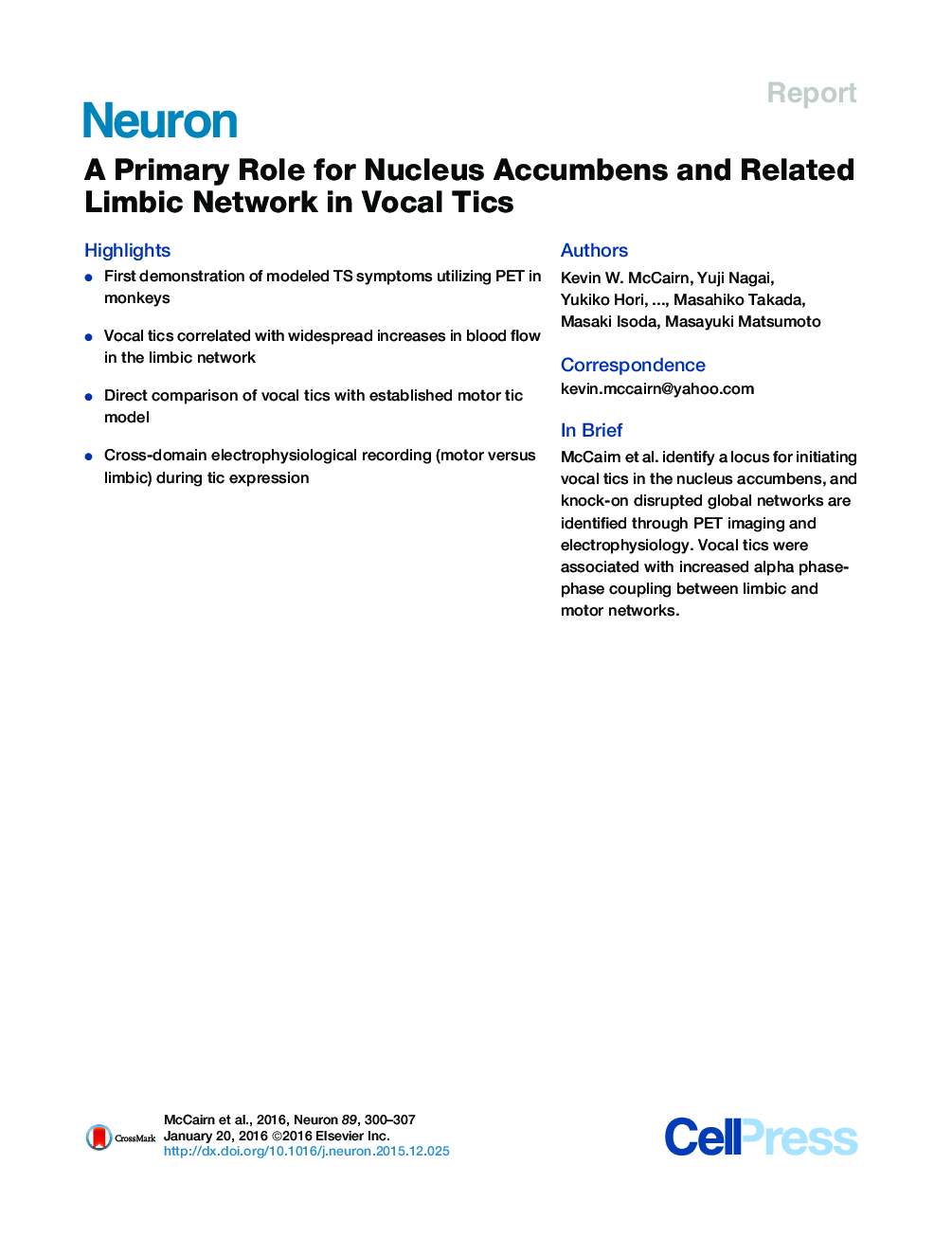| Article ID | Journal | Published Year | Pages | File Type |
|---|---|---|---|---|
| 4320774 | Neuron | 2016 | 8 Pages |
•First demonstration of modeled TS symptoms utilizing PET in monkeys•Vocal tics correlated with widespread increases in blood flow in the limbic network•Direct comparison of vocal tics with established motor tic model•Cross-domain electrophysiological recording (motor versus limbic) during tic expression
SummaryInappropriate vocal expressions, e.g., vocal tics in Tourette syndrome, severely impact quality of life. Neural mechanisms underlying vocal tics remain unexplored because no established animal model representing the condition exists. We report that unilateral disinhibition of the nucleus accumbens (NAc) generates vocal tics in monkeys. Whole-brain PET imaging identified prominent, bilateral limbic cortico-subcortical activation. Local field potentials (LFPs) developed abnormal spikes in the NAc and the anterior cingulate cortex (ACC). Vocalization could occur without obvious LFP spikes, however, when phase-phase coupling of alpha oscillations were accentuated between the NAc, ACC, and the primary motor cortex. These findings contrasted with myoclonic motor tics induced by disinhibition of the dorsolateral putamen, where PET activity was confined to the ipsilateral sensorimotor system and LFP spikes always preceded motor tics. We propose that vocal tics emerge as a consequence of dysrhythmic alpha coupling between critical nodes in the limbic and motor networks.Video Abstract To view the video inline, enable JavaScript on your browser. However, you can download and view the video by clicking on the icon belowHelp with MP4 filesOptionsDownload video (34957 K)
